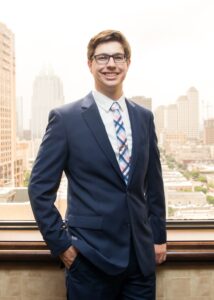Fluence Bioengineering’s new Utility Rebate Coordinator hopes to apply lessons learned during his time at the DesignLights Consortium to tackle similar challenges in the horticultural lighting market

Why lighting?
Like most in the industry, I didn’t come to lighting directly out of school. Initially I worked on a Home Performance with Energy Star program in the D.C. area. Energy efficiency was always big to me, and my next move landed me with the main contractor to the DLC’s SSL program. That’s where I caught the lighting bug, which I owe to working with some of the most passionate and knowledgeable people in the industry.
Favorite project?
I recently had the opportunity to speak at the World Energy Engineering Congress, which was chaired by the IES’s own Mark Lien. This session on lighting was a part of a broader track on emerging energy trends. Getting out in front of non-lighting people is so crucial for our industry if we want everyone to appreciate lighting as much as we do.
Best part of your job?
At the DLC, I loved being able to help turn competitors into collaborators. At our annual conference, I helped lead discussion sessions that seek to find common ground among many people with competing interests. I’m constantly amazed by how willing lighting professionals are to put aside commercial biases in the interest of creating a stronger industry. I see it time and time again at conferences, so to be a part of that is very rewarding.
Biggest obstacle you’ve encountered?
It took me a while to gain confidence with all the jargon/industry speak that’s out there. There’s been so much disruption in the lighting world the last 10 years that it’s important to be up-to-speed. I’ve been in many situations where I saw people saying the same thing but having trouble communicating because they were effectively speaking two different lighting languages.
Most important thing for the future of the lighting industry?
If we’re talking general illumination, that’s easy: networked lighting. While I’m biased and enjoy seeing all the additional energy savings that comes from connected lighting, the nonenergy benefits are arguably the biggest selling point to a customer. Even if an end user doesn’t currently have plans to do anything with that connectivity, they’re being set up for disappointment with how obsolete their lighting will be in just a few short years if not installed now with that capability.
Why the move?
I couldn’t be prouder to have worked on a program like the DLC for the last four-plus years. The market transformation work being done by my colleagues has changed the lighting industry for the better. As a manufacturer of environmentally-friendly LED grow lights for a range of applications, Fluence serves a market currently facing a lot of the same challenges faced by commercial/industrial several years ago. It’s a great new challenge and opportunity to work with a market leader like Fluence to apply a lot of the same lessons from back then to this burgeoning market.
Dream project?
Anyone who talks to me for more than five minutes knows that I have a passion for aviation. I’d love to look into the work that the IES Aviation Lighting Committee is doing and see how I could participate more in that arena.

